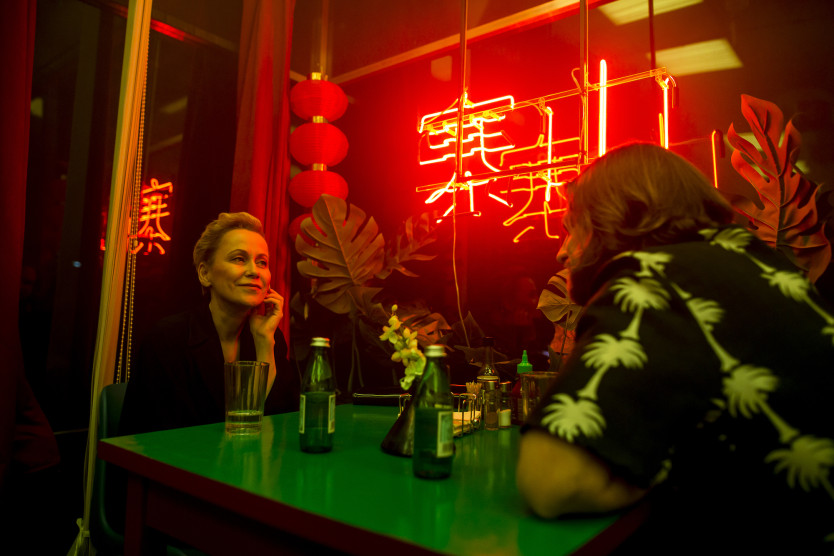Author: Anka Herbut
Creative team:
- Directing: Lukasz Twarkowski
- Translated from Polish by Ingmāra Balode
- Set design: Fabien Lédé
- Costume design: Svenja Gassen
- Choreography: Pawel Sakowicz
- Music: Lubomir Grzelak
- Video design: Jakub Lech
- Light design: Eugenijus Sabaliauskas
- Assistant directors: Mārtiņš Gūtmanis, Diāna Kaijaka, Adam Zduńczyk
- Assistant costume designer: Bastian Stein
- Assistant playwright: Linda Šterna
- Assistant video designer: Adam Zduńczyk
- Video camera operators: Arturs Gruzdiņš, Jonatans Goba
- Actors: Juris Barkevičs, Kaspars Dumburs, Ērika Eglija-Grāvele or Ilze Ķuzule-Skrastiņa, Yan Huang, Andrzej Jakubczyk, Rēzija Kalniņa, Katarzyna Osipuk, Artūrs Skrastiņš, Mārtiņš Upenieks, Vita Vārpiņa, Toms Veličko, Xiaochen Wang
Producer: Ginta Tropa, Dailes Theatre (Dailes teātris)
Date of premiere: 12/03/2022
Duration: 3:55
Alerts: Smoke, strobe, loud music
Dates in SKATE: 3/11/2023 ; 5/11/2023
Venue in SKATE: Dailes Theatre (Dailes teātris)
Translation: Performed in Latvian, English and Chinese, with Latvian and English subtitles
Description:
One of the world's most expensive artworks is Mark Rothko's painting No. 6 (violet, green and red) which sold for a staggering €140 million. Whenever new price records hit the art world, the question that inevitably arises is: what determines the astronomical value of this work? These days the question is even more difficult to answer, given the technological development of the art market, which raises issues around the value of copies of artworks and the artist's reputation.
Inspired by the work of Mark Rothko, director Lukasz Twarkowski, one of the rising stars of European theatre, has created a performance that tries to explore what the new trend of creating artworks in a digital environment and providing blockchain technology really means. How important is the authenticity of the artist's work in all this? And more importantly, does the way in which we experience live theatre in the real world mean that it’s protected from such claims of inauthenticity
The central theme of the story is the relationship between fake and original, and paradoxically how this relationship changes in the virtual environment. On the one hand, “ROTKHO” is a distortion of the famous artist's surname, in the same way in which famous brands are replaced with counterfeits like Adibas or Dolce & Banana. On the other hand, the name simply illustrates Graham Rowlinson’s hypothesis that regardless of the order of letters, as long as the first and final letters of the word remain in place, we can understand the text.

